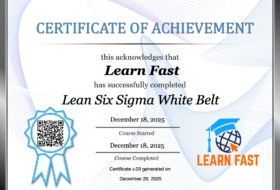Over the years, the concept of Lean has undergone significant changes, becoming intertwined with the interests of businesses. The subtitle of the book “Lean Thinking,” which emphasizes banishing waste and creating wealth in corporations, reflects the outdated assumption that this wealth would trickle down to genba workers. However, as time has passed, the economic conditions of many people have deteriorated, leading to a rise in populist discontent.
It has been more than fifty years since the groundbreaking work of Friedman, Jensen, and Meckling, and yet workers still lack the leverage to initiate changes that truly benefit their interests. While they may seek transformation, the path to achieving it remains elusive.
The original principles of Lean, which aimed to eliminate waste and improve efficiency, were initially developed to benefit both businesses and workers. The idea was that by streamlining processes and reducing costs, companies could generate more wealth, which would eventually trickle down to the workers on the front lines.
However, as Lean practices became more deeply integrated into corporate strategies, the focus shifted towards maximizing profits and shareholder value. The interests of workers took a backseat to the pursuit of financial gains. This shift in priorities has resulted in a significant disconnect between the benefits of Lean and the well-being of workers.
While Lean has undoubtedly brought improvements in productivity and profitability for many companies, the benefits have not been evenly distributed. Workers often find themselves facing stagnant wages, job insecurity, and limited opportunities for growth. This growing disparity between the economic conditions of workers and the wealth generated by businesses has fueled the rise of populist discontent.
However, the challenge lies in the fact that workers still lack the necessary leverage to bring about meaningful change. Despite their discontent, they often find themselves at the mercy of corporate decisions and policies. The power dynamics within organizations heavily favor management and shareholders, leaving workers with limited influence over the decisions that directly impact their lives.
To address this imbalance, it is crucial to empower workers and provide them with a platform to voice their concerns and advocate for their interests. This can be achieved through the establishment of strong labor unions, the implementation of fair labor practices, and the promotion of worker participation in decision-making processes.
Furthermore, businesses must recognize the long-term benefits of investing in their workforce. By prioritizing the well-being and development of employees, companies can create a more engaged and productive workforce. This, in turn, can lead to improved business outcomes and sustainable growth.
While the road ahead may be challenging, it is essential to bridge the gap between Lean practices and the interests of workers. By reevaluating the priorities and ensuring that the benefits of Lean are shared more equitably, businesses can contribute to a more inclusive and prosperous society.
In conclusion, the evolution of Lean has seen it become intertwined with the interests of businesses, often at the expense of workers’ well-being. Despite the rise in populist discontent, workers still lack the leverage to bring about meaningful change. To address this challenge, it is crucial to empower workers and prioritize their interests. By bridging the gap between Lean practices and worker well-being, businesses can contribute to a more equitable and prosperous society.









